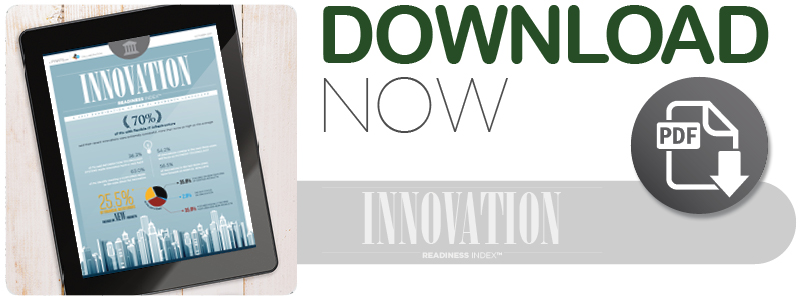Getting FIs Into The “Ready” Business

Who wouldn’t like to gaze into a crystal ball to better anticipate and then plan their next moves in payments?
But there is no crystal ball — only the ability to observe trends and then invest in the things that give companies the flexibility to execute when the future becomes more clear. It’s why Amir Wain, i2c CEO and chairman, believes financial institutions (FIs) must be in “the ready business” when it comes to innovation.
“You shouldn’t predict; you should be ready for whatever comes your way,” Wain said in a recent interview with PYMNTS’ Karen Webster. “I’m not going to be in the prediction business; I’m going to be in the ready business. Throw whatever you want, and we’ll be ready.”
Product cycles are shorter than ever, said Wain. Anything FIs choose to implement today will be out of date by tomorrow unless it’s configurable. It’s impossible to implement the solution for tomorrow’s problems, but FIs can still prepare for the future by choosing solutions and partnerships that create flexibility.
The good news is, according to the recent Innovation Readiness Index, compiled by PYMNTS and i2c, FIs seem to have realized that the time for innovation is nigh. Wain noted FIs are not questioning that they need to innovate to stay competitive; they’ve accepted this and even have budgets for it.
However, many are finding themselves at a loss for what to do next. In some cases, they’re shackled by their own systems, which may not leave much room for innovation and experimentation.
“If one remains stuck in legacy infrastructures with slow-to-react capabilities, the new players will come and take away your business,” Wain said. “The threat is becoming more real. The early majority is pragmatist: They need data points and confirmation. The success of FinTechs has given those data points. The early majority is now also seeing this as something they must do.”
Wain and Webster discussed some of the challenges that hold back larger, more established players, while newer, nimbler FinTechs charge ahead — and what those legacy players can do to keep up. To learn more, sign up for the Innovation Readiness Index webinar on Wednesday, Nov. 29, with Karen Webster and Peg Johnson, executive vice president of global client success at i2c. Inc.
The Blockbuster Business Buster
It’s not easy for an incumbent to change the industry, said Wain. In fact, he can’t think of an instance in which that’s happened. When an industry undergoes a tectonic shift, it’s never the heavyweights who push things forward, he said, because they have too much inertia. It’s the little guys who push the industry into its next stage of evolution and then become the big guys.
“Blockbuster couldn’t transform into a streaming company,” Wain said, by way of example. “Netflix had to come in to do it. Airbnb: Could Marriott have started another service? They couldn’t; they’re stuck in their core business.”
Webster agreed that one of the most difficult things to do is to disrupt your own business in the name of evolution. In the end, she said, most never do it. Instead, they keep doing what they’re doing until someone else comes along to disrupt them instead.
Why don’t those organizations just get with the times? According to Wain, it’s not so simple. Yes, as the Innovation Study showed, flexible core payments processing technology and IT are critical to payments innovation, but transformation is hard, and having multiple mindsets and cultures coexisting in a single organization never works out very well.
That leaves most FIs to play catchup and defense. Wain said a few are taking proactive steps to redefine their business models and identities, but that is the exception rather than the rule. It takes guts to shut down branches and shift business online.
The vendors on which FIs rely — in particular, the larger payments processors — suffer from the same problem. They may realize their customers need a flexible solution to be agile, but their solutions were designed to work in the old paradigm.
“It’s not an incremental change that’s going on today,” said Wain. “It’s an overhaul.”
Call to Action
If incremental change is not enough and a total rebuild is too much, then what’s an FI to do? Wain believes the answer is to outsource.
Introducing new and agile technology infrastructure can be done one of three ways: building a solution in-house, acquiring or purchasing one from an outside developer or outsourcing to a trusted third-party vendor with the goal of forging a strategic partnership to deliver the outcome customers want.
Building is more difficult than it sounds and can pull an organization’s attention and resources away from its core function, said Wain. On top of that, success isn’t measured by simply developing a really cool, creative product. Success happens when that product makes it out into the world and proves itself to be reliable, secure and scalable.
It’s one thing to have a great idea, Webster said. It’s something else to execute. Recognizing the difference, i2c is dedicated to helping FIs carry their great ideas through to fruition. But watching those who have taken the build path on their own, it’s not hard to see why some organizations would prefer to just buy a solution and be done with it.
Wain feels buying is little better than building, since the innovation ends once a product or solution has been purchased and integrated into the larger organization.
Outsourcing to a strategic vendor, on the other hand, enables the organization and its vendor partner to continue focusing on doing what they do best while giving the FI the agility to innovate and meet evolving market needs. When selecting an outsourced vendor partner, FIs should not only look for a creative new product, but also security, reliability and the ability to scale the solution to market, Wain said.
This strategy may not turn Blockbuster into Netflix, but it can enable a Blockbuster to survive and continue serving customers in a Netflix world.
Can’t Turn Back the Clocks
Time and innovation stop for no FI. There is no more room to waffle on this, Wain said.
It used to be that only a few businesses had the necessary permits and licensing to offer financial services. That created a barrier to market entry and offered some protection to those businesses. The erosion of that protection is putting the pressure on FIs — which Wain said is a good thing, even if it’s causing some growing pains at the moment.
Whether a company builds, buys or outsources to a partner, Wain said the important thing is to keep moving. While smaller institutions may feel like they’re at a disadvantage because they can’t keep up with the product and technology innovation that larger players are able to support, they can use their size to their advantage by selecting the right technology partner.
There’s a lot that goes into providing good financial services, and it’s not all about size, Wain said. Smaller banks may actually have an advantage: They already have compliance capabilities, industry knowledge and employee experience. If they can get the right technology infrastructure in place and become innovative, that could give them the edge they need to thrive where legacy players may have worse luck.
Webster’s takeaway?
“Don’t let someone else define your innovation roadmap on the basis of what they can’t do,” she said. “Rather, define the innovation roadmap on the basis of what you need to do to grow the business. The big guys will have their opportunity to shine because they have resources and scale, but this is an opportunity for FIs of all sizes.”
About the Index
The Innovation Readiness Index, an i2c collaboration, measures the likelihood of FIs implementing successful payments innovation. The Index includes survey responses from more than 200 banks and financial institutions. As part of the survey, PYMNTS asked banks to gauge the success of their most recent innovations, then ran a regression of various features and attributes of the FI to determine which had a statistically significant impact on the likelihood of an innovation being successful.

